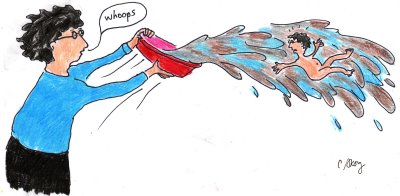 It’s clear that there is quite a lot about this thing we call “school” that probably needs to change and that there are many schools around the world that are embracing and leading that change with some really innovative ideas about teaching and learning.
It’s clear that there is quite a lot about this thing we call “school” that probably needs to change and that there are many schools around the world that are embracing and leading that change with some really innovative ideas about teaching and learning.
However, from what I can tell, innovation and genuine change for the better in education is still rather patchy and relies greatly on the passion and drive of individual teachers, many of whom fly “under the radar” in order to make positive change in their own educational circumstance. There are certainly schools that are, as a single organisation or even a whole system, making giant strides towards reinventing what modern education should be about, but if I was able to randomly drop you into one of the many millions of classrooms around the world to observe what’s taking place inside it, I think it would still be fairly hit or miss as to whether you’d find teaching and learning that was modern, contemporary and representative of the change that many of us want to see happen in education.
We talk a lot about reinventing school. We sometimes declare that school is a “broken system” and wonder about what it would be like to start with a clean slate. We feel the weight of tradition, of a school system based around an agrarian calendar, of a system that was born in a pre-digital age and we dream about changing it. We embrace technology. We build charter schools. We try lots of ideas for making schooling not only different, but hopefully better.
But you know something? Many of the smartest people I know are a product of this “broken” system. Many students emerge from their 13 years of schooling as perfectly normal, well adjusted, happy individuals, ready to embrace the task of making their own dent in the universe. So despite that fact that we like to declare schooling to be in dire need of an overhaul, it seems that it still produces many people who do just fine, thank you very much. This broken system, for all its faults, does actually work for some people. I’m well aware that it does NOT work for many others, and that it could probably work better even for those that emerged from it doing ok, but it got me wondering what aspects of school DO in fact work.
I’m as keen as anyone else to push education forward, to help rebuild it into something that is better and more able to meet the needs of even more students. To make it more “21st century”, if you will. Like so many of my colleagues around the world, I want to be an advocate for the change we need to drag our school system, often kicking and screaming, into the current millennium.
In the process, I’m wondering what, if anything, we should try to keep.
I once asked a group of students to imagine what school could be like if we could wipe the slate clean. What would “school” look like if we could start again, with no preconceptions about what school should look like. I was trying to prompt them to imagine what would happen if we took EVERYTHING about school, burnt it to the ground and threw it away, in order to rebuild the very notion of “school” from the ground up. Their answers were interesting; some were clearly unable to imagine anything that was much different to their current reality, and others really took to the idea of school with an axe, questioning everything and leaving very little that resembled school as we know it.
If we COULD wipe the slate clean, if we could just scrap everything about school and education as we know it, is there anything that you would keep? Despite the claims that our schools are not serving the needs of our current students, is there ANYTHING we do right now that we would NOT want to lose?
I understand that society, technology and the world around our students is changing at a pace greater than at anytime in history, and I appreciate that we really do need to get on with the task of reinventing schools to make them places of learning designed for our students’ future, not our own past, but perhaps we also have to be careful we don’t throw the baby out with the bathwater.
So let me ask you… What do you think are the valuable, enduring and timeless aspects of education? What are the things that, no matter how much we end up reinventing this thing we call “school”, you would not want to lose?
